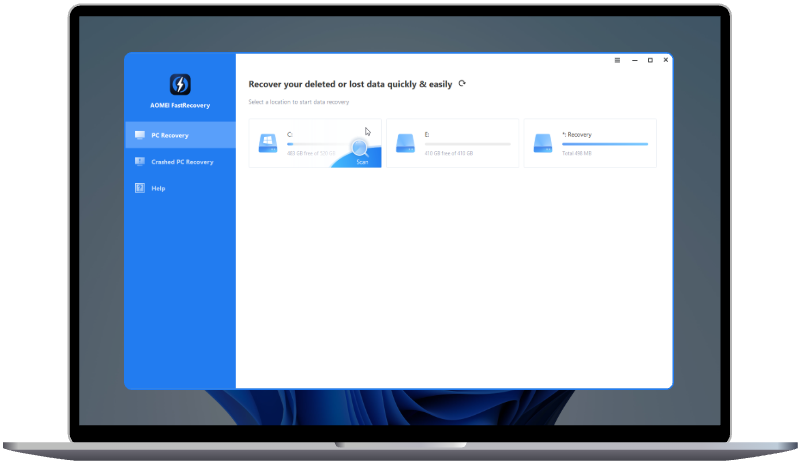How to Create New Partition in Windows 8?
how to Create or make new partition in Windows 8/8.1 (32 bit and 64 bit) without formatting and reinstalling by using AOMEI Partition Assistant and Windows 8 Disk Management.
When you have a new disk, you can create new partitions to help you manage files and documents better. Usually, we suggest at least two partitions, one system partition and one data partition. Of course, three or four partitions will be better; because it will help you classify the files and documents more distinctly. How to create partition Windows 8 or 8.1 without formatting and reinstalling system?
Two ways to create partition in Windows 8 or 8.1 without formatting disk
Here, I will introduce you two ways to create partition in Windows 8, one is AOMEI Partition Assistant [Download], and the other is Windows 8 built-in Disk Management. Some points are worth mention here:
- On MBR Disk, it can include at most four primary partitions, or three primary partitions plus one extended partition, which can include several logical partitions.
-
On GPT Disk, it can include at most 128 primary partitions with no extended partition or logical partition.
-
Compared to AOMEI Partition Assistant, Windows 8/8.1 built-in Disk Management has some disadvantages. For example, you may get some error messages when creating a new partition, such as "You cannot create a new volume in this unallocated space because the disk already contains maximum number of partitions." and "The operation you selected will convert the selected basic disk(s) to dynamic disk(s). If you convert the disk(s) to dynamic, you will not be able to start installed operating systems from any volume on the disk(s) (except the current boot volume). Are you sure you want to continue?" These two errors are due to there are already 4 primary partitions on the MBR disk. To solve these problems, you can first convert one data partition to logical and then continue to create new partition on the logical partition.
Create Windows 8 partition with AOMEI Partition Assistant
As a Partition Magic Software, AOMEI Partition Assistant can create partition Windows 8 in different ways based on the situation. In general, there are two situations.
Tips: AOMEI Partition Assistant is also fully compatible with Windows 8.1, and the steps of creating partition in Windows 8.1 are the same as how to create partition in Windows 8.
Situation 1: If there is an unallocated space on a disk, you can do as follows. (Don't want to use the unallocated space to create a new partition? why not learn how to add unallocated space to a partition in Windows 8)
First, install and launch AOMEI Partition Assistant.
Second, right click the unallocated space, and then select "Create Partition" in the drop-down menu.
In the pop-up window, you can decide the capacity of the new partition by inputting exact number or dragging the slider bar. Here, you can click "Advanced" to set the partition label, drive letter, partition type and file system.
At last, you can preview the new partition, and then click "Apply" on the toolbar to save the operation.
Situation 2: If there is no unallocated space on the disk, you can create a new Windows 8 partition through the following steps.
Step 1: Right click the target partition (here take C drive for example) that has enough free space to create a new partition, and then select "Create Partition".
Then, in the pop-up window, you can determine the capacity of the new partition by entering exact number or dragging the slider bar between C drive and the new partition. What' more, you can also click "Advanced" to set the partition label, drive letter, partition type and file system.
Step 2: click "Apply" to save the changes.
In conclusion, as a powerful partition magic tool, AOMEI Partition Assistant helps you to deal with partition problems easily and safely. It also has the features, such as“Delete Partition”, "Resize Partition", "Split Partition", "Copy Partition", "Allocate Free Space", etc. Download the software and try it out in person.
Make a partition in Windows 8 with Disk Management?
There are a variety of ways to access Windows 8 Disk Management. The original one is through Command Prompt. Usually, we start Disk Management by right clicking "This PC", selecting "Manage", and then choosing "Disk Management".
Tips: you can create a new partition with Windows 8 Disk Management only when there is an unallocated space on the disk.
If there is no unallocated space, you should do as below.
First, right click the partition that has free space, select "Shrink Volume" in the pop-up window window and follow the guidance to get some unallocated spacewindow and follow the guidance to get some unallocated space. Second, right click the unallocated space, select "New Simple Volume" in the pop- up window.

